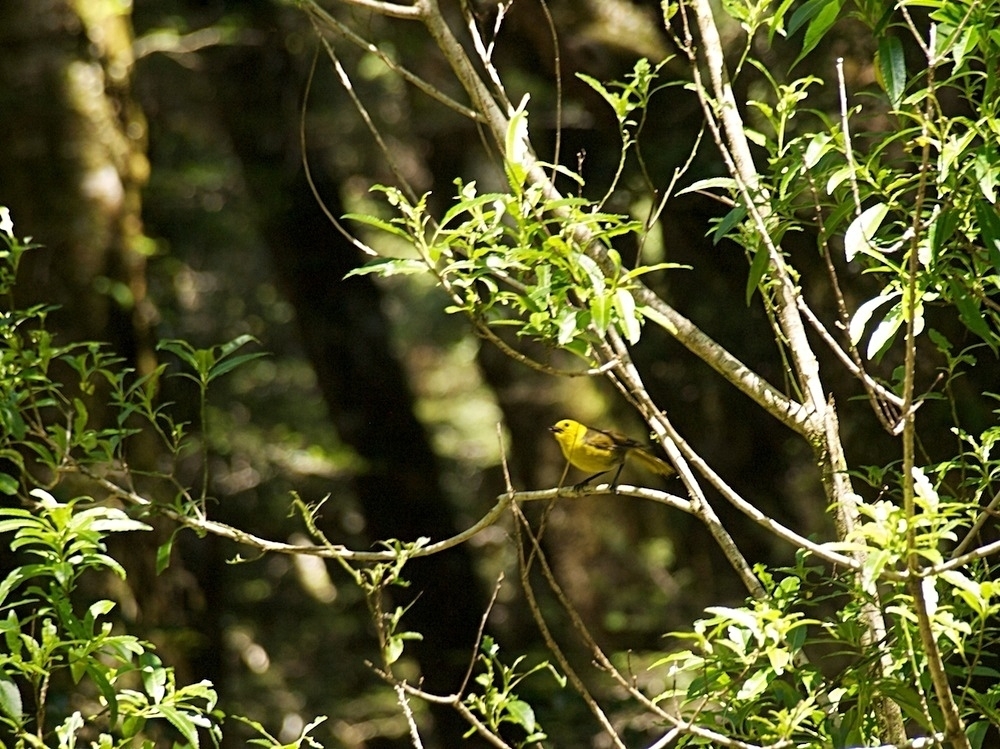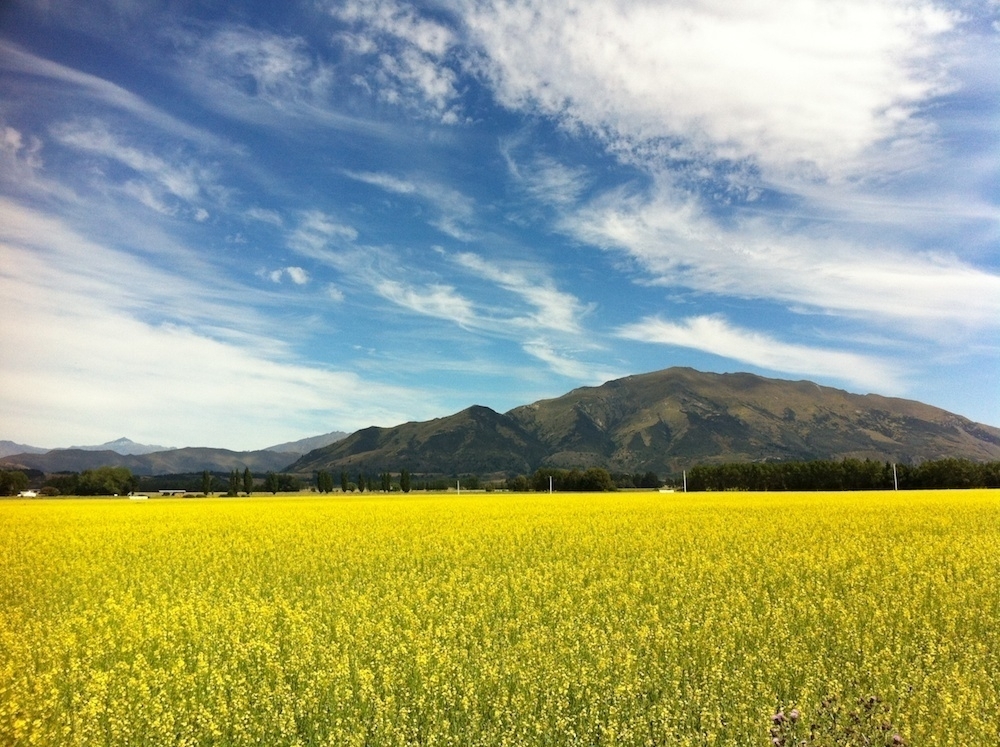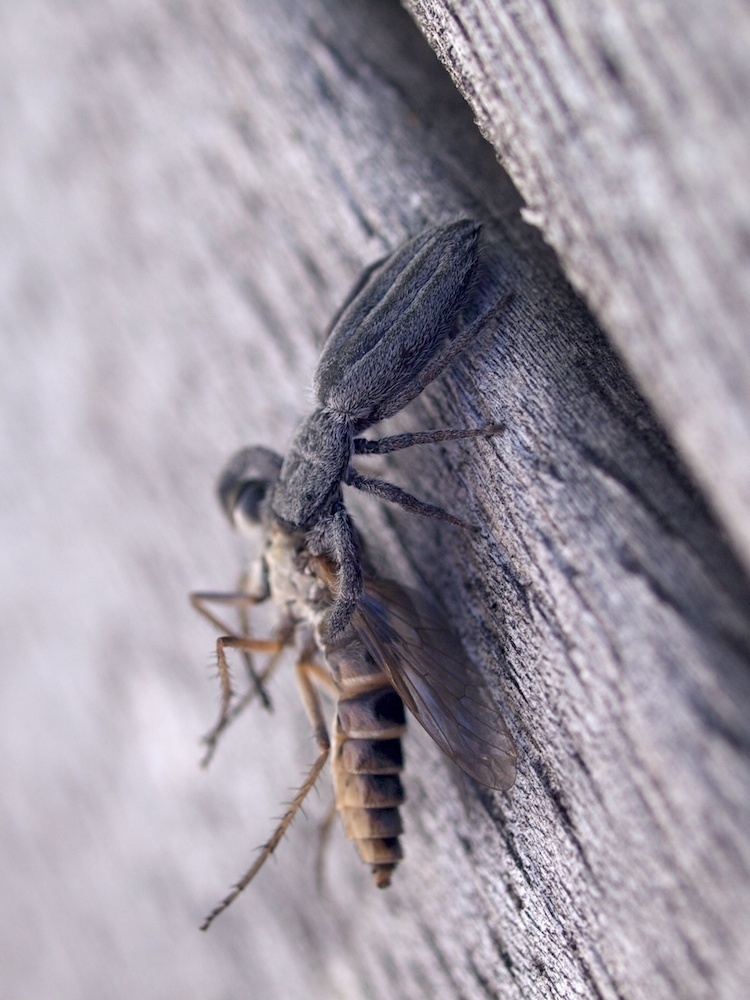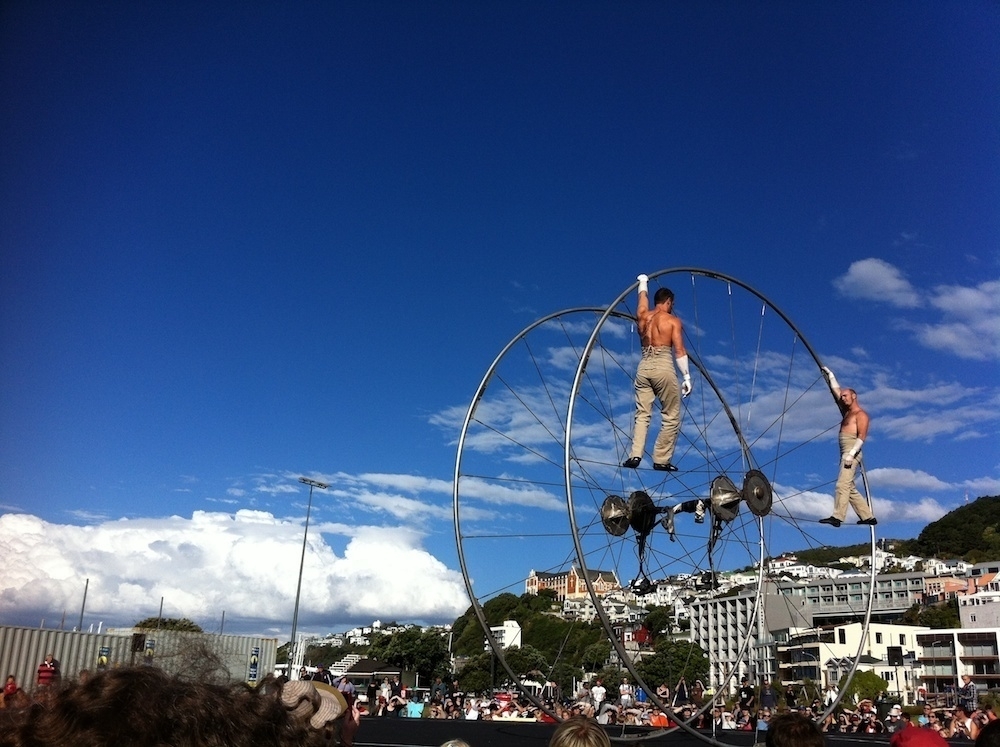This awful weather we’re having. Well, it’s winter I suppose… but it makes me want to look back at this summer past.
And I remember now that I posted nothing here over that period. Clearly time to do something about that then. Lots of photos to follow…
Early Summer
Summer started (or rather, late spring continued) with the local kererū pigging out, as per usual, in our cherry tree:

It’s quite nice to be able to provide them with a little food, if only for this short period of each year. But they seem to do OK around Wellington the rest of the time, foraging everyones' gardens.
The Trip South
We headed away to the Deep South in the days before Christmas. The waters of the Strait were almost eerily calm; fog, no wind; all of which was pretty unusual in crossings that I’ve experienced:

Further south, once on the Mainland, the Southern Rātā was in bloom. There’s always a picturesque clump or two above the sea in the windy bits of road just before Haast:

Of course, there are lots of large and more impressive older rātā trees around there and also up the Landsborough River, but somehow we always seem to stop at this particular spot above the sea.
Another place we like to stop after our previous experience there is the Blue Pools along the Makarora Valley. We were not disappointed. Although there were fewer of the little Riflemen that we spotted there last time, we were very pleased to see a noisy family trio of these:

This is a Yellowhead, or Mohua, and is very rare these days for the heartbreaking reason that it can only exist in native forest fertile enough for it to be able to reproduce fast enough to keep ahead of rat and stoat predation. I suspect the drops of 1080 in the Makarora in the last few years have greatly benefitted these guys and any other remaining native birds in the area. But what would I know.
What I do know is that the New Zealand bush is pretty disappointing for the average, noisy clomping tourist family. Most of the people who were walking the little trail we were on didn’t really see anything. You have to stop, listen carefully, and wait for the flickers of movement that tell you that several little somethings are coming your way. Our surviving endemic bird fauna are, for the most part, just not that obvious.
Around The Farm
Once down on the farm the weather turned very hot and dry. This was apparently quite a contrast to up north, where it was wet in most places over the Christmas statutory holidays.
You’ll be pleased to know that there was at least one overcast day with a few spits of rain. This was the day that my Dad collected us all up into his farm truck and drove us across to a farm dam inhabited by a Pied Stilt and three little roadrunners:

While we watched this little family the other adult was flying around and around, quite close and making quite a bit of noise, and so we thought we’d better move off before we disturbed the pair too much. It would not do to have the chicks abandoned.
Naturally we had our bikes with us, and sometimes I’d ride to town to get a coffee (about a 30km round trip on fairly quiet roads):

These guys actually make quite good coffee that would stand up in any of the major cities. They’re best known for their pies, cakes and pastries and I very much like stopping there.
On the way back there are a couple of spots waiting for a camera (especially on this particular day, which was extremely hot and requiring of several stops):

This is an old railway carriage, left behind in the late 1960s as the tide of railway track that brought it here receded back to Dunedin.
I do like my polarising filter overmuch, don’t I:

A bit further down the road, this shed is similar to that more famous one at Wedderburn on the Otago Central Rail Trail. What not many people know is that the original shed at Wedderburn was sold some years ago… and the shed that’s now at Wedderburn is a ring-in that the locals there purchased and took from the next station down the track on this line. There’s no such thing as genuine: how would you define it?
Tripping About The South
Lake Hāwea
There’s always time for a couple days at the family crib at Lake Hāwea. I got out on the bike for a couple rides down the river trail and across Hāwea Flat, where I saw this striking, but I suppose not uncommon, sight:

It’s a field of rapeseed, or what the Canadians rebranded Canola, presumably grown as winter feed for stock. That’s Mt Maude in the background, and a very nice walk to the top can be had if you are fittish (it’s about 900m above the plain). The other nice thing about this photo is the sky - the Upper Clutha Basin on hot days has the most beautiful skies.
The sky is the best feature in this photo too:

We’re down by Lake Hāwea, but instead of looking north for the conventional lake view this is back up the terminal moraine, past a dead tree I could probably have done more with. But those swirls of cloud!
And back at the crib, the small:

I was pretty impressed with this Holoplatys jumping spider catching such big prey. It wasn’t quite able to drag it back into the narrow gap between the boards, and so it stayed in a helpful-for-shooting spot for a some time. Despite this helpfulness, I still mucked up the depth of field on all of my photos of it.
North Otago
Back on the farm we decided on a trip to somewhere we’d never been before: Oamaru. On the way, we stopped at the Moeraki Boulders:

While the Boulders were pretty cool, the better thing for us was spotting a pod of Hector’s Dolphins working their way along the surf. There’s actually two in the above shot.
I got a bit over excited and tried repeatedly to capture a decent shot of the little dolphins. Sadly, this was the best I could manage:

At some point in the future we should go for a visit to Porpoise Bay in the Catlins, where there is a pod of Hector’s Dolphins almost always in residence. Some years ago when R. and I were passing by there on our way to Curio Bay nearby we watched them play in the surf with the kids from the local camping ground. After hearing this story both B₂ and R₂ liked the idea of the chance to do the same.
Oamaru is known by visitors for two things, mainly: its beautiful Victorian architecture, and its penguins. We had a pretty good look around the former, and in the evening went to a clifftop outside town where we could spy upon the latter–specifically the larger of the two local species, the Yellow-eyed Penguin:

They were surprisingly noisy, the nesting bird calling to its mate (who sometimes we could even see, waddling out of the water and across the beach far below, past the seals and into the scrub at the beach edge).
The next day we drove back through the Waitaki Valley, following the Vanished World trail to Duntroon. Thoroughly recommended: fossils, strange limestone country, Māori rock art, and at the end quite a nice visitors' centre where the girls found some fossils of their very own in the blocks of limestone provided. Then we drove over the Dansey’s Pass to Naseby and the Maniototo and onwards back to the farm.
The Rest Of Summer
Not long after that we had to come home to Wellington. From then on for us summer was mainly Wellington; school; work; slowly drawing in days. Though this year was also a festival year we didn’t get out to much except one or two of the free events, like Arcane:

Winter is here
So there you have it: in one blog posting what I would have taken ten to do in earlier years. And I can barely wait for the warm dry weather to return. Roll on summer.